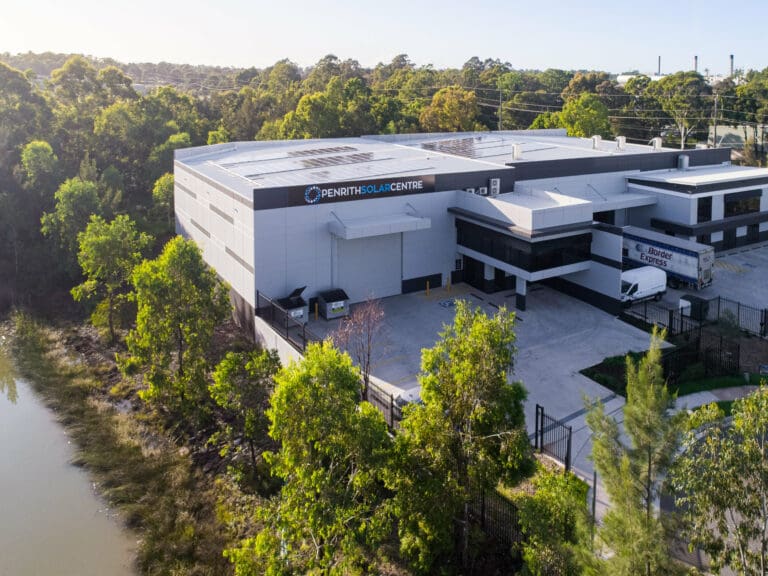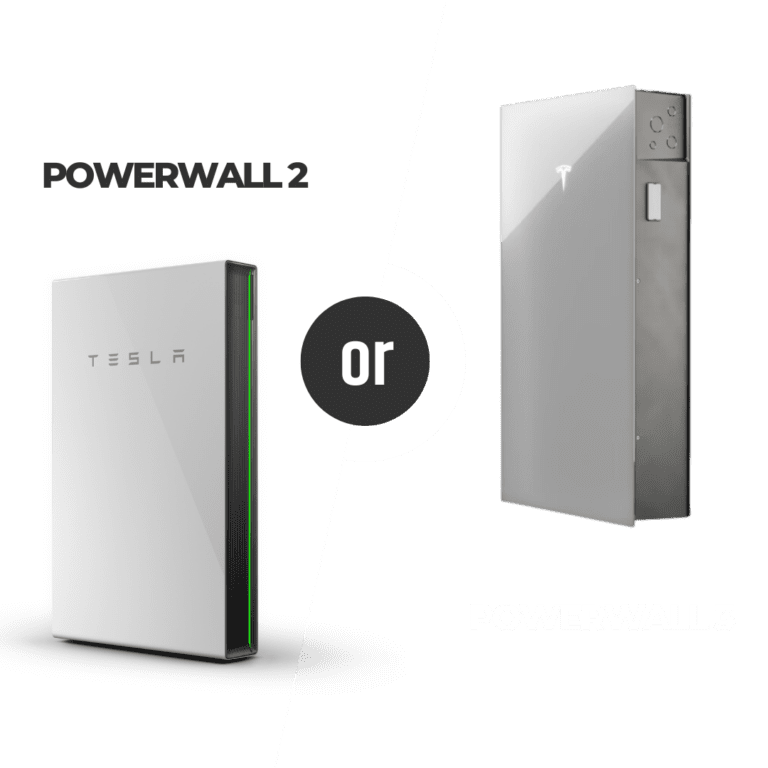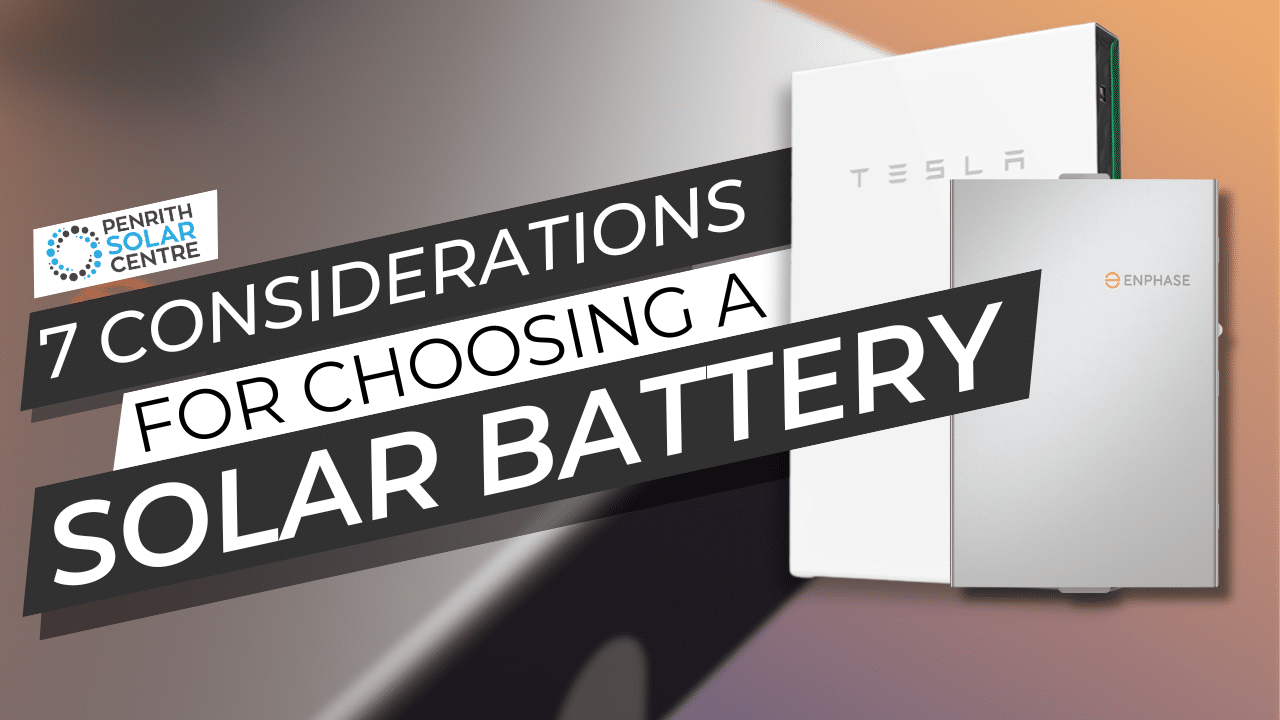
Because solar panels only work in the daytime, they can only power your home when the sun is up. Otherwise, that energy is sent to the grid for a feed-in tariff. Enter the solar battery.
Solar Systems with batteries are being installed at record rates, saving consumers money while helping the environment. Finding the right installer and equipment can be overwhelming if you don’t know where to begin. You’ve probably searched for some information on solar batteries. You might be interested in installing one with a system or retrofitting an existing solar array. Whether you hire us or not, you need to understand what your needs are and what to consider while you shop for energy storage solutions.
So take a deep breath, unclench your shoulders, and read on. We’re going to dive into what you should consider before choosing a solar battery for your home. In this article you can expect to learn more about the following battery topics and how they relate to you:
- Understanding Your Usage Patterns.
- Compatibility with Solar Panels: The Difference Between AC-Coupled and DC-Coupled Batteries
- What is the Capacity of a Solar Battery?
- How to Define Battery Efficiency
- Factors That Affect a Battery’s Lifespan
- Types of Solar Batteries
- What to Look Out for in a Warranty
Understanding Your Usage Patterns
The first step in selecting a solar battery is to understand how you use energy. Before I started working in solar, I only thought about my energy usage when I was paying my bills. Here are some questions you need to ask yourself when you start shopping for solar batteries.
- When are you home? In the daytime when the sun is out or at night when the lights are on?
- What are you powering (appliances, electronics, or something as hungry as an air conditioner)?
- How long are you running these appliances?
- Does the season make a difference? Summer sure might require more electricity to run the AC.
- How big is your home?
- What are your habits and preferences?
- How many people are under one roof and do their habits vary? Maybe someone won’t sleep unless you leave the light on or someone else only needs their room cooled before bedtime.
When you start to think about it, there are really quite a few factors that affect your usage patterns.
If you understand your usage patterns, you’ll have information that will help you calculate the cost of your monthly bill. And that will inform your solar choices. Understanding your usage patterns is the first step in making choices about your solar battery.
If you’re interested in learning a bit more about the importance of monitoring and programming your energy, you might want to check out the following article titled, What is Consumption Monitoring?
The Difference Between AC-Coupled and DC-Coupled Batteries
There are two types of solar batteries on the market: AC-coupled batteries and DC-coupled batteries. The word “coupled” here means how the battery is connected to the solar system on the roof; through AC or DC power. If you already have a solar panel system, make sure that the battery you choose to install can talk with your solar panels.
Let’s get you a little better informed about the two types of batteries.
AC-Coupled Batteries
In an AC-coupled system, the DC power that is collected by the panels is converted to AC power before it goes anywhere. A microinverter is attached to the underside of each panel and its job is to convert that power to something the house can use: AC power. AC power goes to the house for operating appliances and lights. Any extra AC power is sent to the battery.
However, all battery storage must be in the form of DC energy. All batteries can only store energy in the form of DC (direct current). So, the AC electricity leftover from powering the home has to be converted back to DC energy for storage in the battery. This is done by inverters or microinverters in the battery (depending on the brand). So, power is converted from DC to AC at the panel, it’s sent to the house, and then the extra is sent back to the battery where it’s converted, again, back into DC energy.
To make things even more complex, we still have to mention that electricity sent back to the electrical grid must be in the form of AC power. So there’s yet another conversion back to AC power.
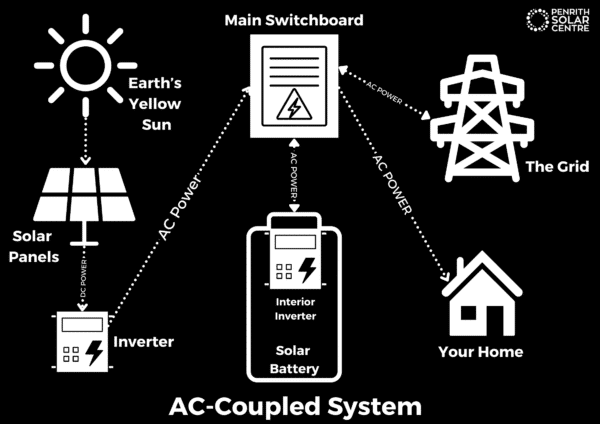
Here are some Pros and Cons about AC-coupled batteries…
Pros:
- Retrofitting: they’re much more compatible than DC-coupled batteries with existing solar arrays.
- No central point of failure. If the battery fails, the solar panels can continue supplying the home with electricity.
- The battery and the solar panels operate independently. If the panels are not generating enough electricity, the battery can charge from the grid.
Cons:
- They’re more expensive than DC-coupled batteries. There are more components (some have multiple inverters within them), and a higher price because of this.
- Every time the power is converted from DC to AC, there is a loss of energy. These processes add up and over time the entire system is less efficient than a DC-coupled battery system. The efficiency varies from brand to brand, but in general an AC-coupled battery is between 90 – 94% efficient while a DC-coupled battery is about 98% efficient. That energy loss is translated into cost and that cost adds up over time.
DC-Coupled Batteries
DC-coupled batteries have been around longer than their AC-coupled counterparts. A string solar panel system feeds DC power directly to the DC-coupled battery without converting the power to AC electricity first. It’s only later, when the electricity is ready to be used, that it’s converted to AC power and sent to the home or the grid.
In DC-coupled solar battery systems, the inverter that alters electricity from DC to AC is not on the solar panel or in the battery, like it is with AC-coupled systems. It’s a separate device, usually mounted outside somewhere. This device directs traffic (so to speak), guiding the recently altered AC power where it needs to go; the home or the grid. We call this style of string inverter a hybrid inverter.
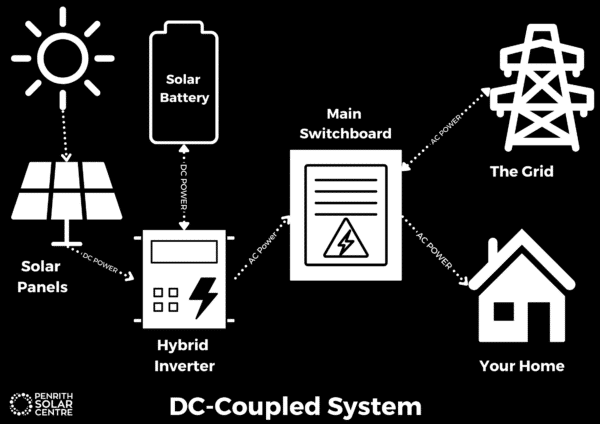
Here are some Pros and Cons about DC-coupled batteries…
Pros:
- 3 – 8% more efficient than AC-coupled batteries because the whole system turns DC electricity to AC electricity less often.
- Lower upfront cost than AC-coupled batteries.
Cons:
- Retrofitting: difficult, but not impossible (like assassinating Hyman Roth). DC-coupled batteries are only compatible with certain types of inverters and solar systems whereas AC-coupled batteries are compatible with virtually any solar array.
- Central point of failure: because there’s only one hybrid inverter in the system, if it fails, the whole system goes down. An AC-coupled solar system has multiple inverters or microinverters that allow the panels and the battery to act independently.
If you’re interested in learning more about types of solar batteries, you might want to check out the following article titled, AC-coupled Battery vs. DC-coupled Solar Batteries.
What is the Capacity of a Solar Battery?
Capacity, when it comes to solar batteries, is the total amount of electricity a battery can store. The stored electricity is measured in kilowatt-hours (kWh). Residential solar batteries are designed to be “stackable,” which means homeowners can add multiple batteries together for more capacity. The capacity of the battery depends on the brand and model.
Capacity is the size of the battery but to really understand how that works with your home and solar system, you need to understand its power rating. Energy is electricity stored and power is electricity in motion. The power rating of a solar battery is measured in kilowatts (kW).
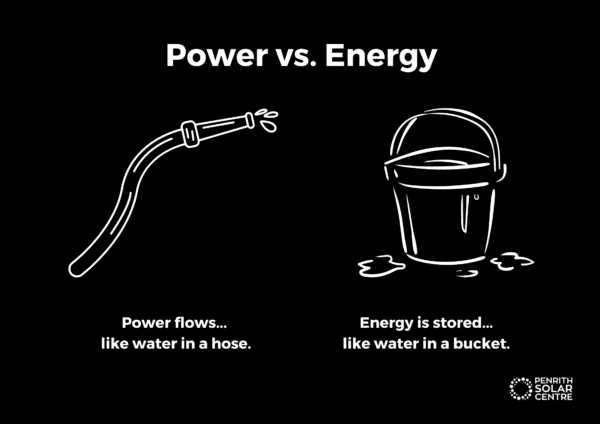
A battery with high capacity but a low power rating can provide a small amount of electricity to the home. Enough to run a couple of essential appliances over an extended period of time. A battery with low capacity but a high power rating could supply electricity to power the entire home, but only for a short period of time.
If you’re interested in learning a bit more about the upcoming solar battery rebate, you might want to check out the following article titled, Everything You Need to Know About the Home Battery Rebate for NSW.
How to Define Battery Efficiency
Depth of Discharge (DOD): Depth of discharge is a critical metric when assessing the performance of solar batteries. It quantifies the amount of electricity withdrawn from the battery relative to its total capacity. You can think of it as a fuel gauge for your battery, similar to how your car’s fuel gauge shows you how much gas remains in your tank.
Most solar batteries need to maintain a minimum level of stored electricity due to their chemical composition. For example, if you have a 10 kWh battery with a Depth of Discharge (DoD) of 90%, this means you should recharge the battery after it has been used to provide 9 kWh of electricity, or when it reaches about 10% of its capacity.
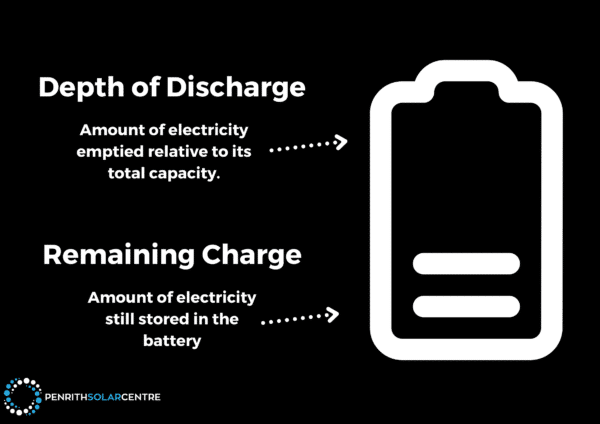
A higher depth of discharge is generally desirable because it allows you to utilize more of the battery’s stored energy before needing to recharge it. This can increase the efficiency and flexibility of your solar energy system.
Round-trip Efficiency: When it comes to charging and discharging batteries, it’s important to understand that this process isn’t perfectly efficient. There is always some energy loss during operation. Round-trip efficiency is a measure of this energy loss and is typically expressed as a percentage.
In simple terms, round-trip efficiency tells you how much energy is lost during the charging and discharging cycles of a battery. For example, if a battery has a round-trip efficiency of 90%, it means that for every 100 units of energy you put into the battery during charging, you’ll get 90 units of usable energy out of it during discharge. The remaining 10% is lost as heat or other forms of inefficiency.

When choosing a solar battery system, it’s important to consider both depth of discharge and round-trip efficiency, as they play crucial roles in determining the overall performance and cost-effectiveness of your solar energy setup.
Lead-acid batteries, like the one in your car, typically have a round-trip efficiency of 75%. A lithium-ion battery has a round-trip efficiency of around 96%. A Tesla Powerwall, which is lithium NMC (Nickel-Manganese-Cobalt), delivers a round-trip efficiency of 92.5%.
If you’d like to learn a bit more about what solar batteries are on the market, you might want to check out the following article titled, 6 Best Solar Batteries on the Market.
Factors That Affect a Battery’s Lifespan
Battery Degradation: The progressive loss of a battery’s ability to store energy (capacity in kWh) and deliver power (kW) over time is called battery degradation. There are a lot of things that can contribute to it, but it’s a process that takes years and it’s normal for all battery types and brands.
Cycles: A battery’s lifespan is measured in cycles. A cycle is how many times it can perform a full charge and discharge. The size of your battery and how much electricity your household consumes will determine how often your battery will cycle. The more often your battery cycles, the faster your battery will degrade.
Environment: Temperature extremes can significantly impact your battery’s lifespan. Where you place your solar battery can also impact how long it lasts. If you have it mounted on the side of the house, it will be more susceptible to temperature extremes than one mounted in your garage where the environment is more controlled. Most solar batteries can handle a wide range of temperatures, especially lithium-ion batteries. The exact high and low points vary from product to product.
Maintenance: Monitoring your battery’s performance through the included monitoring app is the best way to stay on top of maintaining its lifespan. When performance begins to drop off, or if the app notifies you of irregularities, it’s time to reach out to your installer or find a service technician.
Types of Solar Batteries
There are four different solar battery types. Not all of them are available to consumers in Australia. Different brands favour different types of batteries.
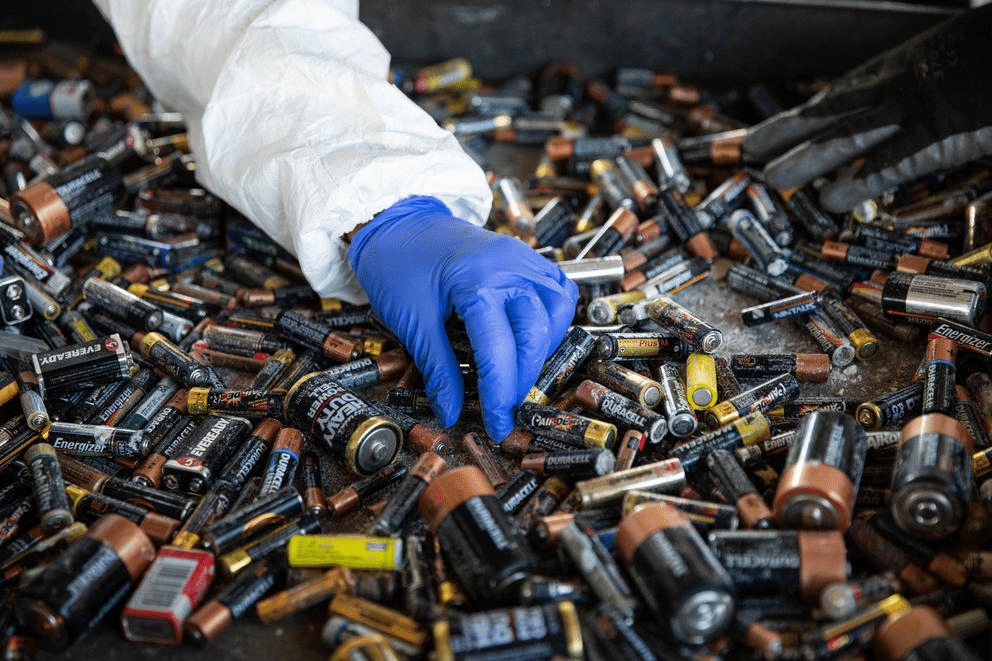
Lithium-ion:
This is the type of battery that you have in your cell phone or laptop. The Tesla Powerwall and Enphase IQ are this type of battery. This type of battery is replacing all the others on the market because of its longer lifespan and efficiency.
- Lifespan: 4,000 – 6,000 cycles or 10 – 15 years depending on how often you charge them.
- Depth of Discharge: 80%
The unfortunate disadvantage of lithium-ion batteries is how expensive they are. The cost ranges from $800 – 1,000 per kWh depending on the manufacturer. The good news is that as the technology develops the price will go down. The industry is moving towards mass production of lithium-ion batteries with Tesla and Enphase at the forefront.
Lead-acid:
This is the type of battery that you’ll find in your car. Lead-acid batteries were the standard for solar systems until about ten years ago. It’s an older technology, but some Australians with no grid access still use them.
- Lifespan: 1,000 – 3,000 cycles or 2 – 8 years depending on how often you charge them.
- Depth of Discharge: 60%
Flow:
Flow batteries are a new player in the game of energy storage, and we’ve yet to see whether they’ll stick around for long or not.
- Lifespan: 4,000 cycles
- Depth of Discharge: 100%
Flow batteries can be stored at zero charge, and they won’t degrade at all over time.
They’re good in extreme weather. The design of the battery is constructed in such a way as to eliminate the possibility of fire (the zinc-bromide in the battery is actually a fire retardant).
Flow batteries are expensive. They start at around $1,300 per kWh.
Sodium Nickel Chloride:
This type of battery works well in temperature extremes. They’re also fully recyclable and without any toxic chemicals that are dangerous to the environment. They also don’t require an internal cooling system.
- Lifespan: 3,500 – 4,500 cycles
- Depth of Discharge: 80%
Unfortunately, they’re not yet fully available in Australia.
If you’re interested in learning a bit more about what you can use as a solar battery options, you might want to check out the following article titled, 7 Alternatives to a Solar Battery in Your Home.
Ready to go solar? Let’s get started!
What to Look Out for in a Warranty
A solar battery warranty usually addresses performance in terms of capacity and power output over time. They cover manufacturing defects and unexpected or unreasonable degradation.
Lithium-ion solar batteries typically come with warranties that extend beyond a decade, usually exceeding 10 years. In contrast, solar batteries with shorter lifespans, such as lead-acid batteries, offer warranties with shorter durations. If you’re in the market for a lithium-ion battery, it’s essential to understand what to consider when evaluating the warranty.
Look at the number of cycles covered by the warranty – a higher number of cycles equals a longer lifespan. However, many manufacturers will guarantee a minimum number of cycles or a fixed term in years. Whichever the battery hits first is when your warranty expires.
When you’re reading the small print, pay attention to how the warranty operates over time. Some follow a pro-rated structure in terms of the years used. For example, if your battery experiences a malfunction after five years and you request a refund, the refund amount could be calculated as a percentage of the initial battery cost, say 50%.
If you’re interested in learning a bit more about the warranties for the products we install, you might want to check out the following article titled, A Complete Guide to Solar Warranties.
Final Considerations for Choosing a Solar Battery
Throughout this article, we covered a range of important considerations in choosing a solar battery, from understanding usage patterns to what to look for in a warranty. You’re now better equipped to navigate the landscape of energy storage solutions.
Remember that there is no one-size-fits-all answer; the ideal battery for your home may differ from someone else’s. By making an informed choice, you can create a more energy-efficient and environmentally responsible home. Ask the right questions, find the answers, and take action to power your future with confidence.
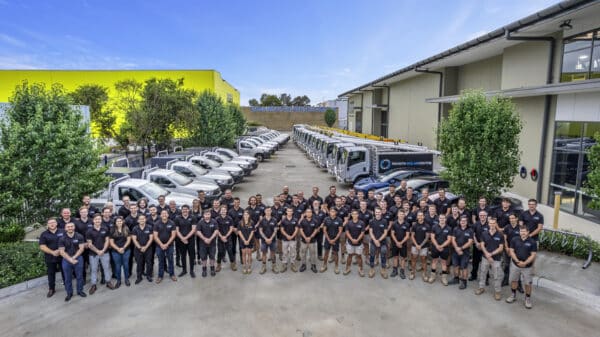
If you’re interested in comparing the two leading residential solar batteries, you might want to check out the following article titled, Enphase IQ Battery 5P vs Tesla Powerwall 2: Which is Right for You?

